#Automated Fare Collection Systems
Explore tagged Tumblr posts
Text
Automated Fare Collection Systems Market Insights Challenges in Implementation and Scalability
The Automated Fare Collection (AFC) Systems market is revolutionizing public transportation by enhancing efficiency, security, and convenience. As digital payment technologies advance, AFC systems are integrating smart cards, contactless payments, and AI-driven analytics. This market is growing due to increasing urbanization, government investments, and rising demand for seamless mobility solutions.
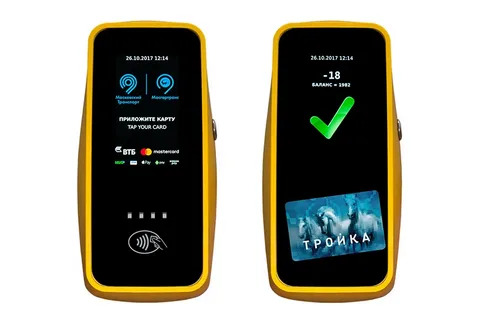
Automated Fare Collection Systems Market Insights: Transforming Public Transport Efficiency
Automated Fare Collection (AFC) systems are modernizing the global public transportation sector by streamlining ticketing and fare management. These systems enhance operational efficiency, reduce revenue leakage, and improve passenger experiences by enabling quick, cashless transactions. As cities aim for smart mobility, AFC solutions are becoming an essential component of urban transit infrastructure.
Automated Fare Collection Systems Market Insights: Key Drivers Fueling Market Growth
Several factors are driving the growth of the AFC market, including rapid urbanization, increasing public transport ridership, and the shift towards digital and contactless payments. Technological advancements in smart ticketing, mobile apps, and biometric authentication are also propelling market expansion. Additionally, government initiatives supporting smart city projects further accelerate adoption.
Automated Fare Collection Systems Market Insights: The Role of Digital Payment Technologies
Digital payment innovations are at the core of AFC systems. The integration of NFC, QR code-based payments, and mobile wallets has transformed fare collection, making transactions faster and more secure. The growing preference for cashless payments among commuters is compelling transit agencies to adopt advanced AFC technologies to enhance service delivery.
Automated Fare Collection Systems Market Insights: Adoption of Contactless and Mobile Payment Solutions
The shift towards contactless payments gained momentum post-pandemic, as hygiene concerns led to a decline in cash transactions. Mobile ticketing apps, contactless smart cards, and tap-and-go payment solutions are now widely used, enabling seamless travel across different modes of transport and eliminating the need for physical ticketing infrastructure.
Automated Fare Collection Systems Market Insights: The Growing Importance of Interoperability
Interoperability is becoming a critical factor in AFC systems as cities aim to integrate multiple transportation services under a single payment platform. Unified ticketing solutions allow passengers to use one fare system for buses, metros, trains, and ride-hailing services, promoting seamless travel experiences and enhancing operational efficiency for transit agencies.
Automated Fare Collection Systems Market Insights: Challenges in Implementation and Scalability
Despite its benefits, the AFC market faces challenges such as high implementation costs, security risks, and system integration complexities. Scalability issues arise when expanding AFC networks to cover new routes and transport modes. Addressing these challenges requires strategic planning, investment in cybersecurity, and the development of standardized payment protocols.
Automated Fare Collection Systems Market Insights: The Role of AI and Big Data in Modern Transit
Artificial Intelligence (AI) and Big Data analytics are reshaping AFC systems by providing real-time insights into passenger behavior, fare optimization, and demand forecasting. AI-driven AFC solutions help transit operators manage peak-hour traffic efficiently, reduce fare evasion, and enhance decision-making processes through predictive analytics and automated reporting.
Automated Fare Collection Systems Market Insights: Regional Market Trends and Growth Potential
The AFC market is witnessing significant growth across various regions. Asia-Pacific is leading with smart transport infrastructure investments, while North America and Europe are focusing on upgrading legacy systems. Emerging markets in Latin America and the Middle East are also embracing AFC technology to improve public transport accessibility and efficiency.
Automated Fare Collection Systems Market Insights: The Impact of Government Policies and Investments
Governments worldwide are playing a crucial role in AFC market growth by implementing policies that promote cashless transactions and investing in smart transport solutions. Subsidies, public-private partnerships, and funding for digital ticketing systems are encouraging widespread AFC adoption, leading to more efficient and sustainable urban transit networks.
Automated Fare Collection Systems Market Insights: Future Innovations and Industry Outlook
The future of AFC systems lies in biometric authentication, blockchain-based fare management, and AI-powered automation. As technology continues to evolve, the industry is expected to see further enhancements in security, user experience, and interoperability. The AFC market will remain a key enabler of smart mobility and digital transformation in public transport.
Conclusion
Automated Fare Collection Systems are at the forefront of modernizing public transportation, offering a seamless, cashless, and efficient fare payment experience. As urbanization and digitalization continue to grow, AFC systems will play a pivotal role in shaping smart mobility solutions. Overcoming implementation challenges and leveraging emerging technologies will drive future market expansion and innovation.
#Automated Fare Collection Systems Market#Automated Fare Collection Systems Market trends#Automated Fare Collection Systems#Automated Fare Collection#Automated Fare
0 notes
Text
There's a lot to talk about with MARTA's new automated fare collection system. Will it make riding MARTA easier? How are we doing when compared to other transit systems? Kip Dunlap takes a deep dive into the system with this guest post.
11 notes
·
View notes
Text
https://www.linkedin.com/pulse/malaysia-railway-automated-fare-collection-afc-system-gsjkf/
0 notes
Text
Automated Fare Collection Market
Automated Fare Collection Market Size is valued at $50.2 Billion by 2031, and is anticipated to grow at a CAGR of 15.3% during the forecast period 2025–2031.
🔗 𝐆𝐞𝐭 𝐑𝐎𝐈-𝐟𝐨𝐜𝐮𝐬𝐞𝐝 𝐢𝐧𝐬𝐢𝐠𝐡𝐭𝐬 𝐟𝐨𝐫 𝟐𝟎𝟐𝟓-𝟐𝟎𝟑𝟏 → 𝐃𝐨𝐰𝐧𝐥𝐨𝐚𝐝 𝐍𝐨𝐰
Automated Fare Collection (AFC) market is evolving rapidly as public transit agencies embrace digital transformation. Driven by demand for contactless, mobile, and account-based ticketing, AFC systems are enhancing convenience, reducing operational costs, and improving data-driven transit planning. Urbanization, smart city initiatives, and post-pandemic hygiene concerns are accelerating adoption worldwide.
🔑 𝐊𝐞𝐲 𝐌𝐚𝐫𝐤𝐞𝐭 𝐃𝐫𝐢𝐯𝐞𝐫𝐬 𝐟𝐨𝐫 𝐀𝐮��𝐨𝐦𝐚𝐭𝐞𝐝 𝐅𝐚𝐫𝐞 𝐂𝐨𝐥𝐥𝐞𝐜𝐭𝐢𝐨𝐧 (𝐀𝐅𝐂):
✔ 𝐔𝐫𝐛𝐚𝐧𝐢𝐳𝐚𝐭𝐢𝐨𝐧 𝐚𝐧𝐝 𝐒𝐦𝐚𝐫𝐭 𝐂𝐢𝐭𝐲 𝐈𝐧𝐢𝐭𝐢𝐚𝐭𝐢𝐯𝐞𝐬
Growing urban populations are increasing demand for efficient, integrated, and scalable public transit systems, driving AFC system adoption.
✔ 𝐃𝐞𝐦𝐚𝐧𝐝 𝐟𝐨𝐫 𝐂𝐨𝐧𝐭𝐚𝐜𝐭𝐥𝐞𝐬𝐬 𝐚𝐧𝐝 𝐂𝐚𝐬𝐡𝐥𝐞𝐬𝐬 𝐏𝐚𝐲𝐦𝐞𝐧𝐭 𝐒𝐲𝐬𝐭𝐞𝐦𝐬
Post-pandemic hygiene concerns and user preference for digital convenience are accelerating the shift to contactless payment methods (e.g., NFC, QR, mobile wallets).
✔ 𝐆𝐨𝐯𝐞𝐫𝐧𝐦𝐞𝐧𝐭 𝐈𝐧𝐯𝐞𝐬𝐭𝐦𝐞𝐧𝐭𝐬 𝐢𝐧 𝐏𝐮𝐛𝐥𝐢𝐜 𝐓𝐫𝐚𝐧𝐬𝐩𝐨𝐫𝐭 𝐈𝐧𝐟𝐫𝐚𝐬𝐭𝐫𝐮𝐜𝐭𝐮𝐫𝐞
National and municipal investments in smart mobility and digital infrastructure are supporting widespread AFC deployment, particularly in Asia-Pacific and Europe.
✔ 𝐈𝐧𝐭𝐞𝐠𝐫𝐚𝐭𝐢𝐨𝐧 𝐰𝐢𝐭𝐡 𝐌𝐮𝐥𝐭𝐢𝐦𝐨𝐝𝐚𝐥 𝐓𝐫𝐚𝐧𝐬𝐩𝐨𝐫𝐭 𝐒𝐲𝐬𝐭𝐞𝐦𝐬
Rising demand for seamless travel experiences across buses, metros, trains, and bike-sharing is fueling the need for unified fare systems.
✔ 𝐃𝐚𝐭𝐚-𝐃𝐫𝐢𝐯𝐞𝐧 𝐓𝐫𝐚𝐧𝐬𝐢𝐭 𝐌𝐚𝐧𝐚𝐠𝐞𝐦𝐞𝐧𝐭
AFC systems generate valuable data for optimizing routes, managing peak hours, and improving operational efficiency.
𝐋𝐢𝐦𝐢𝐭𝐞𝐝-𝐓𝐢𝐦𝐞 𝐎𝐟𝐟𝐞𝐫: 𝐆𝐞𝐭 $𝟏𝟎𝟎𝟎 𝐎𝐟𝐟 𝐘𝐨𝐮𝐫 𝐅𝐢𝐫𝐬𝐭 𝐏𝐮𝐫𝐜𝐡𝐚𝐬𝐞
𝐓𝐨𝐩 𝐊𝐞𝐲 𝐏𝐥𝐚𝐲𝐞𝐫𝐬:
Automated Logic Corporation | Automated Health Systems | Connected Automated Driving in Europe| ZF Group | AUTOBAG® Brand Automated Systems | JBT Automated Systems | Automated Systems (H.K.) Limited | R&E Automated | Toyota Automated Logistics Group | Automated Technology (Phil.) Inc. — ATEC | Automated Medical Products Corp. | FAPA — Federal Automated Protection Agency
#AutomatedFareCollection #AFCSystems #PublicTransport #SmartCity #TransitTechnology #SmartMobility #ContactlessPayments #DigitalTransit #MobilitySolutions #TransportationInnovation

0 notes
Text
0 notes
Text
0 notes
Text
0 notes
Text
Public Transport Revolution: Naidu's Metro and Public Transit Projects

As you ponder the daily commute chaos and environmental impact of traditional transport systems, Naidu's Metro and public transit projects offer a glimpse into a potential transformative solution. With a focus on efficiency, sustainability, and technological integration, these initiatives hold the promise of reshaping how cities approach urban mobility. The implications of Naidu's vision extend far beyond mere transportation upgrades, touching on broader themes of urban development, environmental stewardship, and social equity. The question remains - how will these projects shape the future of public transport and influence other cities worldwide?
Naidu's Vision for Urban Mobility
Naidu's vision for urban mobility aims to revolutionize public transport systems through efficient and sustainable solutions. Urban planning plays a pivotal role in shaping the future of transportation within cities. By integrating smart urban planning principles, Nara Chandrababu Naidu's leadership to enhance transport efficiency, reduce congestion, and promote environmental sustainability.
Transport efficiency is a key component of Naidu's vision. Through strategic urban planning, transport networks can be optimized to guarantee a smooth flow of traffic, reducing travel times and enhancing overall accessibility. By implementing innovative solutions such as dedicated bus lanes, bike-sharing programs, and pedestrian-friendly infrastructure, Naidu's plan seeks to create a seamless and integrated transport system.
Nara Chandrababu Naidu's Vision emphasizes the importance of sustainable transport options. By promoting eco-friendly modes of transportation such as electric buses, cycling lanes, and efficient metro systems, urban areas can significantly decrease carbon emissions and create a healthier environment for residents. Through a thorough approach to urban planning and transport efficiency, Naidu's vision for urban mobility sets the stage for a more sustainable and interconnected future.
Metro Expansion and Modernization
The metro system's expansion and modernization efforts are pivotal for enhancing urban transportation infrastructure and addressing growing commuter needs. To achieve these goals, securing diverse funding sources is crucial. TDP Party President Nara Chandrababu Naidu's administration has been proactive in leveraging public-private partnerships, government grants, and innovative financing models to support metro projects. This multi-faceted approach guarantees sustainable funding streams and reduces the burden on public finances.
In tandem with securing funding, embracing technological advancements is essential for the metro's expansion and modernization. Implementing state-of-the-art signaling systems, automated fare collection methods, and real-time passenger information systems can greatly enhance operational efficiency and passenger experience. By integrating smart technologies, the metro system can optimize service delivery, reduce wait times, and increase overall reliability.
Impact on Commuter Experience
Enhancing the commuter experience through streamlined operations and improved service quality is a paramount objective of the metro system's expansion and modernization initiatives. Passenger comfort is being prioritized through the incorporation of ergonomic seating, adequate spacing to reduce crowding, and climate control systems to guarantee a pleasant journey regardless of external conditions. Safety measures such as CCTV surveillance, emergency intercoms, and automated announcements contribute to a secure environment for passengers.
Commuter satisfaction has seen a significant boost with efficiency improvements like reduced waiting times, increased frequency of trains, and real-time updates on arrivals and departures. The implementation of digital ticketing systems has streamlined the process, making it quicker and more convenient for passengers to board trains. These advancements not only enhance the overall commuter experience but also contribute to increased ridership and a shift towards more sustainable transportation options.
Sustainable Transportation Solutions
Implementing sustainable transportation solutions is essential for reducing carbon emissions and promoting eco-friendly travel practices in urban areas. By investing in eco-conscious initiatives such as expanding public transit networks, implementing bike-sharing programs, and promoting walkability, cities can greatly reduce their environmental impact. Public transportation systems, like the ones initiated by Naidu, play an important role in providing efficient and sustainable mobility options for residents, thereby decreasing the reliance on individual cars and lowering overall carbon emissions.
Community engagement is key in the success of sustainable transportation projects. Involving residents in the planning and decision-making processes guarantees that the initiatives meet the needs of the local population while also fostering a sense of ownership and pride in the community. Encouraging active participation through public forums, surveys, and workshops can lead to the development of more effective and inclusive transportation solutions. By prioritizing sustainability and involving the community, cities can pave the way for a greener, more efficient urban transportation system.
Economic Benefits and Challenges
To fully grasp the impact of sustainable transportation solutions on urban areas, examining the economic benefits and challenges is essential. Conducting a cost benefit analysis of public transit projects like Naidu's Metro can provide valuable insights into their economic viability. These projects have the potential to generate substantial economic benefits by reducing traffic congestion, lowering carbon emissions, and improving overall mobility within cities.
However, one of the major challenges faced by such initiatives is securing adequate funding. Public transit projects often require significant investment in infrastructure, technology, and maintenance. Finding sustainable funding sources and ensuring cost-effectiveness are vital for the long-term success of these projects.
0 notes
Text
Growth Opportunities in the Global Automated Fare Collection Systems Market
The global automated fare collection systems market is undergoing a significant transformation, driven by increasing urbanization, rising public transport ridership, and the push toward digitalization in transportation infrastructure. AFC systems, which automate ticketing processes across various modes of public transport such as buses, subways, and commuter rails are fast becoming essential components in smart city planning.

Market Dynamics
One of the most significant drivers of the AFC market is the growing demand for contactless payment technologies. With the global focus on hygiene and safety post-pandemic, transit authorities are rapidly adopting cashless systems, including smart cards, mobile apps, and QR-based payment options. This trend is not just limited to developed nations. Emerging economies in Asia and Latin America are also investing in these technologies to modernize their public transit systems.
Another crucial factor contributing to the growth of AFC systems is the increasing adoption of Mobility-as-a-Service (MaaS) frameworks. These platforms integrate various transportation services into a single accessible and efficient mobility solution. Automated fare collection is at the heart of MaaS, providing seamless interconnectivity across services and simplifying fare management.
Technology Evolution
The technological landscape of AFC systems is evolving rapidly. Modern systems leverage cloud computing, artificial intelligence, and big data analytics to provide real-time information on fare usage, system performance, and passenger flow. These insights help transit authorities optimize route planning and operational efficiency.
Biometric authentication, facial recognition, and blockchain-based ticketing are emerging trends that could redefine how fare collection systems operate. Though still in the early stages of adoption, these technologies promise enhanced security and a more personalized passenger experience.
Market Segmentation
The AFC market is generally segmented by component, technology, and application. Components typically include hardware (validators, ticket vending machines, gates), software (backend systems, mobile apps), and services (installation, maintenance, and upgrades).
From a technological standpoint, contactless smart cards continue to dominate, but mobile-based ticketing and account-based ticketing are gaining momentum due to their convenience and scalability. Application-wise, the systems are deployed across bus networks, railways, and ferry services, with metropolitan rail and bus rapid transit systems showing the highest adoption rates.
Regional Insights
Asia-Pacific is currently the fastest-growing region in the AFC market, thanks to significant infrastructure investments in countries like China, India, and Japan. The region’s rapid urbanization and increasing government focus on smart city initiatives make it a fertile ground for AFC system deployment.
North America and Europe, on the other hand, lead in terms of technological maturity and innovation. These regions are more inclined toward adopting integrated systems that support multimodal transport and cross-border mobility. Public-private partnerships are also more common in these regions, enabling quicker and broader implementation.
Challenges and Opportunities
Despite the promising outlook, the AFC market faces challenges such as high upfront costs, integration complexities, and concerns around data privacy. Legacy systems often pose integration hurdles, especially when cities attempt to adopt newer technologies without a complete overhaul.
However, these challenges also present opportunities. There's a growing market for hybrid systems that can bridge old and new technologies. Additionally, vendors offering flexible, modular solutions are well-positioned to gain traction as transit agencies look for cost-effective ways to modernize.
Future Outlook
The automated fare collection systems market is poised for strong growth in the coming years. As urban populations continue to rise and the demand for efficient, user-friendly public transport systems grows, AFC solutions will be pivotal in shaping the future of urban mobility. With continued technological innovation and increasing global investment in smart infrastructure, the market is expected to remain dynamic and highly competitive.
For stakeholders across the board governments, private operators, and technology providers the focus must be on building systems that are not only efficient but also secure, scalable, and inclusive. The journey toward a truly intelligent transportation ecosystem begins with a smart, seamless fare collection system.
0 notes
Text
Optimizing Cash Flow: Strategies for Travel Agencies Using Automation Tools
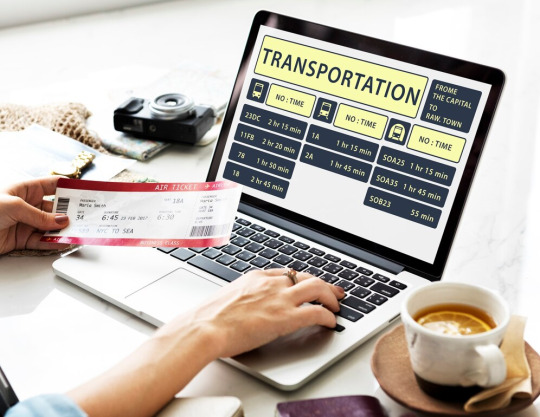
Effective cash flow management is crucial for the financial health of any travel agency. By implementing strategic measures and leveraging advanced tools like travel accounting software, agencies can ensure a steady and predictable cash flow.
Optimize Payment Collection Processes
Delayed payments can disrupt cash flow and hinder daily operations. To mitigate this, establish clear payment terms, such as requiring deposits or full payments before confirming bookings. Offering diverse payment options—including credit cards, digital wallets, and online transfers—can expedite collections. Additionally, utilizing automated invoicing and payment reminders through travel accounting software can reduce overdue accounts and enhance financial stability.
Utilize GDS Automation for Expense Management
Global Distribution Systems (GDS) automation streamlines booking processes by providing real-time data on fares and availability. This automation reduces manual errors and accelerates transactions, leading to more predictable cash flow. Access to up-to-date pricing allows agencies to offer competitive rates while safeguarding profit margins. Moreover, automating these processes decreases administrative costs, contributing to overall financial efficiency.
Implement BSP Link Automation for Efficient Reconciliation
Managing airline payments can be complex, but automating the Billing and Settlement Plan (BSP) process simplifies reconciliation. BSP Link Automation facilitates accurate and timely settlements between travel agencies and airlines, reducing errors and preventing payment delays. This leads to precise financial records and improved relationships with airline partners, enhancing overall cash flow management.
Monitor and Control Operational Expenses
Regularly reviewing and analyzing operating expenses is vital for maintaining a healthy cash flow. Identify areas where costs can be reduced without compromising service quality. Negotiating favorable terms with suppliers and investing in cost-effective travel accounting software can yield significant savings. Such software provides comprehensive insights into financial transactions, aiding in effective budgeting and expense management.
Prepare for Seasonal Demand Variations
The travel industry often experiences seasonal fluctuations that can impact cash flow. Planning ahead by reserving funds during peak periods can help cover expenses during slower seasons. Additionally, diversifying services and targeting corporate clients can create more consistent revenue streams, mitigating the effects of seasonal downturns.
Conclusion
Proactive cash flow management is essential for the sustainability and growth of travel agencies. By adopting efficient payment collection methods, leveraging GDS automation and BSP Link automation, closely monitoring expenses, and preparing for seasonal variations, agencies can achieve financial stability. Investing in robust travel accounting software, such as Traacs, further streamlines operations and supports long-term success.
0 notes
Text
The Future of the Intelligent Transportation System Market: Innovations Driving Smart Mobility

Transforming Transportation with Cutting-Edge Technologies
The Intelligent Transportation System market is undergoing a significant transformation, driven by rapid advancements in digital technology and automation. As urban populations grow and traffic congestion worsens, the demand for intelligent and efficient transportation solutions is increasing. Governments and private enterprises are actively adopting AI-powered traffic control, IoT-based smart infrastructure, and data-driven analytics to enhance mobility and ensure safer road networks.
Key Growth Drivers in the ITS Market
The Intelligent Transportation System (ITS) market is expanding due to the increasing need for improved traffic management and smart mobility solutions. The integration of cloud computing, AI, and big data analytics in ITS solutions allows cities to manage traffic flow more efficiently and reduce congestion. Additionally, investments in smart city projects and government regulations promoting the adoption of intelligent transportation technologies are further accelerating market growth.
Sustainability is another key factor fueling the ITS market. The rise of electric vehicles, autonomous driving technologies, and intelligent public transport systems is reshaping urban mobility. These innovations contribute to reducing carbon emissions while improving overall transportation efficiency and accessibility.
Emerging Innovations in the ITS Market
The ITS market is witnessing groundbreaking innovations that are redefining transportation systems worldwide. Vehicle-to-everything (V2X) communication is enabling seamless connectivity between vehicles and infrastructure, improving road safety and traffic efficiency. AI-driven predictive analytics help transportation authorities anticipate congestion and take proactive measures to manage traffic conditions in real time.
Furthermore, the adoption of blockchain technology in ITS solutions is enhancing data security and transparency, ensuring seamless transactions in toll collection, vehicle tracking, and automated fare payment systems. 5G connectivity is also playing a crucial role in enabling real-time data sharing, improving response times for emergency services, and optimizing fleet management.
ITS Market Size and Future Projections
The ITS market size is expected to witness significant growth over the next decade, driven by increasing investments in smart mobility and digital transformation initiatives. Analysts predict that as urbanization continues, the demand for AI-driven traffic management systems, connected vehicle infrastructure, and intelligent mobility solutions will surge. Companies specializing in cloud-based analytics, cybersecurity for transportation networks, and automated traffic control systems will see substantial growth opportunities in the coming years.
Conclusion
The Intelligent Transportation System market is at the forefront of reshaping modern mobility, making transportation networks more efficient, safe, and sustainable. As technology continues to evolve, cities and businesses must collaborate to implement innovative ITS solutions that enhance urban mobility and reduce congestion. With advancements in AI, IoT, and smart infrastructure, the ITS market will play a vital role in defining the future of intelligent transportation and urban development.
#Intelligent Transportation System market#Intelligent Transportation System (ITS) market#ITS Market#ITS Market Size
0 notes
Text
How Belt Coin Changers Improve Cash Transactions in Public Transport
Public transport operators handle cash transactions daily, often in fast-paced environments where efficiency is key. A belt coin changer for bus drivers simplifies fare collection, reduces wait times, and enhances passenger convenience. Let’s explore how this essential tool benefits public transport systems.
Faster Fare Collection with Belt Coin Changers
Manually handling coins can slow down boarding, creating long queues and delays. A coin dispenser for transport allows drivers to quickly access the right change, speeding up transactions. Studies show that automated or assisted fare handling reduces boarding times by up to 30%, improving overall service efficiency.
Enhanced Accuracy and Reduced Errors
Fare miscalculations can lead to revenue losses or disputes. A fare collection tool like a belt coin changer ensures drivers distribute the correct change effortlessly, minimizing human error and improving cash accountability.
Increased Passenger Convenience
Passengers expect quick and smooth transactions, especially during peak hours. With a belt coin changer for bus drivers, they receive change faster, reducing frustration and keeping traffic flow steady at bus stops. According to transit studies, efficient fare handling can improve passenger satisfaction by 25%.
Cost-Effective and Durable Solution
Unlike complex electronic systems, a coin dispenser for transport is a low-maintenance and cost-effective solution. These changers are designed for durability, making them a long-term investment for transit operators.
FAQs
1. How does a belt coin changer work? A belt coin changer is a hands-free device worn by bus drivers that holds multiple coin denominations. It allows for quick dispensing of change with a simple press or slide mechanism.
2. Can belt coin changers be used for different currencies? Yes, many models support different coin sizes and currencies, making them adaptable for various transit systems worldwide.
3. Are belt coin changers comfortable to wear for long hours? Yes, they are lightweight and designed with adjustable belts to ensure comfort for extended use.
4. Do belt coin changers require maintenance? Minimal maintenance is needed. Regular cleaning and occasional lubrication of moving parts keep them functioning smoothly.
Improve Your Fare Collection Efficiency Today!
Upgrade your transit system with a belt coin changer for bus drivers. Reduce transaction times, minimize errors, and enhance passenger satisfaction. Order now and experience seamless fare collection tools built for efficiency!
Contact us today to learn more about our reliable coin dispensers for transport!
#belt coin changer for bus drivers#coin dispenser for transport#fare collection tool#fare collection tools#coin dispensers for transport
0 notes
Text
How does Travel Scraping API Service Transform Travel Data from Booking & Expedia?
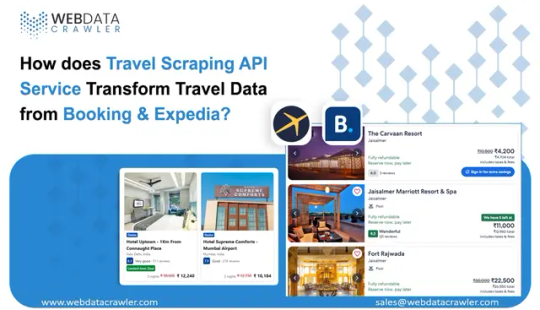
Introduction
The travel industry is inundated with vast amounts of data in the modern digital landscape. This information is crucial for making informed business decisions, from hotel prices and flight schedules to customer reviews and seasonal trends. However, retrieving and analyzing data from leading platforms like Booking.com and Expedia.com can be complex without the appropriate tools. This is where a Travel Scraping API Service proves invaluable, transforming how businesses extract, process, and utilize travel data to maintain a competitive advantage.
Understanding the Power of Travel Data
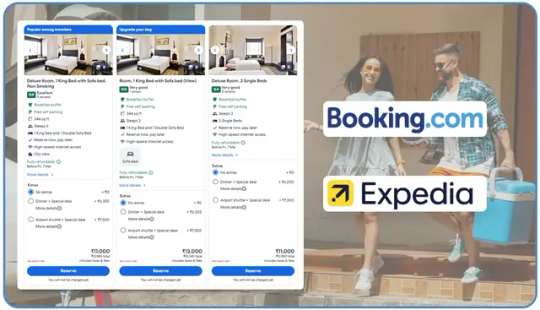
The travel industry generates an enormous volume of data every day. Every search, booking, and review contributes to this expanding information pool. For businesses in this sector, effectively accessing and analyzing this data is essential for:
Gaining more profound insights into market dynamics and consumer behavior.
Tracking pricing trends and assessing competitive positioning.
Identifying new market opportunities.
Refining revenue management strategies for maximum profitability.
Elevating the customer experience through advanced personalization.
Leading online travel agencies (OTAs) such as Booking.com and Expedia.com hold valuable data. However, obtaining this information isn’t always straightforward, as official channels often limit access. As a result, data extraction becomes a critical strategy for businesses aiming to maintain a competitive edge.
What is a Travel Scraping API Service?

A Travel Scraping API Service is a powerful solution that efficiently extracts data from major travel platforms like Booking.com and Expedia.com. By leveraging advanced data collection techniques, this service gathers, organizes, and delivers valuable travel-related data in a structured format for businesses.
Unlike traditional manual data collection, which can be slow and prone to errors, a Travel Scraping API Service automates the process, ensuring real-time access to critical insights,
Including:
Hotel availability and pricing
Flight schedules and fares
Vacation rental options
Customer reviews and ratings
Destination popularity
Seasonal booking patterns
These services function through APIs (Application Programming Interfaces), enabling smooth integration with business systems and applications and ensuring companies have the latest travel data at their fingertips.
The Transformation Journey: From Raw Data to Actionable Insights
This process involves extracting, processing, and analyzing raw data from travel platforms to generate meaningful insights that drive strategic decision-making.
Data Extraction from Major Travel Platforms
The journey begins with Booking.com API Scraping and Expedia.com Data Scraping, leveraging advanced techniques to ensure seamless data retrieval.
This process involves:
Automated collection of both structured and unstructured data.
Managing dynamic content loaded via JavaScript.
Navigating pagination and complex site architectures.
Implementing strategies to avoid detection and IP blocks.
Handling session cookies and authentication for continuous access.
Professional Travel Industry Data Scraping services utilize sophisticated algorithms and proxy solutions to guarantee reliable and consistent data extraction without disrupting the source websites.
Data Processing and Structuring
Once the raw data is collected, it must be transformed into a structured, usable format.
This involves:
Cleaning and normalizing data for accuracy.
Eliminating duplicates and irrelevant entries.
Standardizing formats such as dates and currencies.
Categorizing and tagging data for better organization.
Building relational data structures for in-depth analysis.
For instance, Hotel Price Data Scraping results must be standardized across various room types and occupancy levels, and amenities must be included, ensuring precise and meaningful comparisons.
Data Analysis and Insight Generation
With processed data in place, the next step is extracting actionable insights to drive informed decision-making.
This includes:
Analyzing price trends across different booking windows.
Assessing competitive positioning in key markets.
Identifying demand patterns for popular destinations.
Examining customer sentiment through review analysis.
Understanding the correlation between pricing strategies and booking volumes.
Leading Travel Scraping API Service providers integrate AI and machine learning algorithms to refine data analysis further. These technologies uncover hidden patterns and trends, offering deeper intelligence beyond traditional analytical methods.
Key Data Types Extracted from Travel Websites
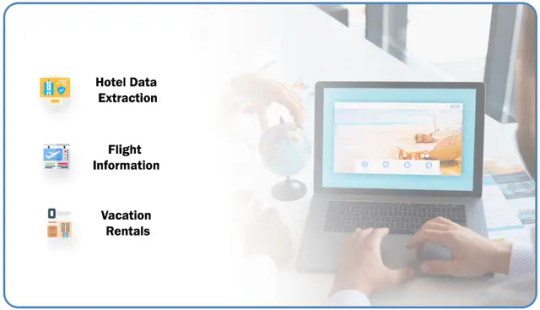
Essential travel data categories gathered from online sources for market insights and strategic decisions.
Hotel Data Extraction
Collecting real-time hotel-related data, including pricing, availability, reviews, and amenities, to analyze market trends and improve decision-making.
Hotel Price Data Scraping provides critical insights, including:
Room rates across various dates and booking periods.
Availability trends and demand fluctuations.
Discount strategies and promotional offers.
Package deals and bundled services.
The loyalty program benefits frequent guests.
Amenity offerings and service comparisons.
Guest reviews and ratings shaping consumer perception.
This data enables hotels to refine pricing models, track competitor strategies, and identify emerging market opportunities.
Flight Information
Essential travel data covering flight schedules, pricing, availability, and airline details, helping businesses optimize travel strategies.
Flight Data Extraction uncovers key insights such as:
Fare variations across different booking windows.
Route popularity and demand trends.
Airline competitive positioning and pricing strategies.
Schedule changes and operational adjustments.
Seasonal demand patterns affecting ticket pricing.
Ancillary service offerings like baggage fees and seat selection.
Airlines and travel agencies leverage this data for strategic route planning, optimized pricing, and targeted marketing.
Vacation Rentals
Short-term lodging options, such as apartments, houses, or villas, are listed on platforms like Airbnb and Vrbo, catering to travelers seeking flexible accommodations.
Vacation Rental Data Scraping delivers valuable insights into:
Property availability and booking trends.
Pricing strategies are based on demand and seasonality.
Location popularity among travelers.
Amenity preferences shape guest expectations.
Host ratings and service reliability.
Booking patterns across platforms.
Seasonal trends affecting rental demand.
This intelligence is essential for property managers, investors, and vacation rental platforms to optimize pricing, enhance guest experiences, and improve occupancy rates.
Optimizing Travel Data Extraction with Advanced Web Scraping Services

Access to accurate, real-time data is crucial in the competitive travel industry. Businesses leverage Travel Data Scraping Services to extract and analyze key information from top travel platforms. This includes tracking airfare trends, monitoring hotel availability, and analyzing customer sentiment for informed decision-making.
A primary use of web scraping in travel is Dynamic Pricing Data Extraction. Airlines, hotels, and OTAs adjust prices based on demand and competition. Real-time data extraction helps businesses optimize pricing, develop competitive strategies, and boost revenue.
Selecting the Best Web Scraping Tools For Travel Websites is essential for handling complex site structures, dynamic content, and anti-scraping defenses. These tools ensure efficient data retrieval from Booking.com, Expedia.com, and Airbnb.
To maintain efficiency, businesses must follow Travel Industry Data Scraping Best Practices, like rotating proxies, AI-driven parsing, and automated scraping schedules. Ethical data collection ensures compliance with regulations and platform terms.
For tailored solutions, Custom API Scraping Solutions For Travel Websites provide real-time structured data, benefiting travel aggregators, comparison websites, and analytics firms seeking to enhance their offerings.
Extracting Hotel And Flight Prices From APIs
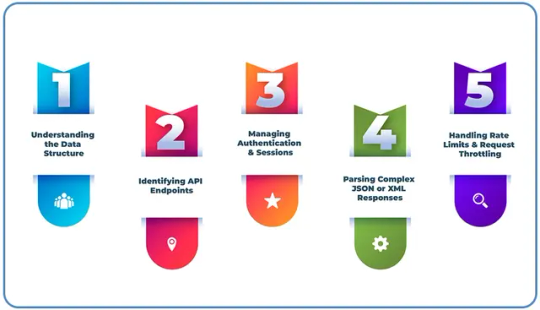
Extracting Hotel And Flight Prices From APIs requires a strategic approach to ensure accuracy and efficiency.
Here’s a breakdown of key considerations:
Understanding the Data Structure: Analyzing how travel websites organize and present hotel and flight pricing information.
Identifying API Endpoints: Using browser developer tools to locate and access relevant API endpoints.
Managing Authentication & Sessions: Implement authentication mechanisms and handle session persistence to maintain seamless data retrieval.
Parsing Complex JSON or XML Responses: Structuring and processing intricate data formats to extract relevant pricing details.
Handling Rate Limits & Request Throttling: Optimizing request frequency to comply with API restrictions and prevent access blocks.
Businesses can automate these processes by leveraging professional services for seamless and scalable data extraction, even as travel websites update their security protocols and data structures.
Web Scraping for Market Trend Analysis in Travel
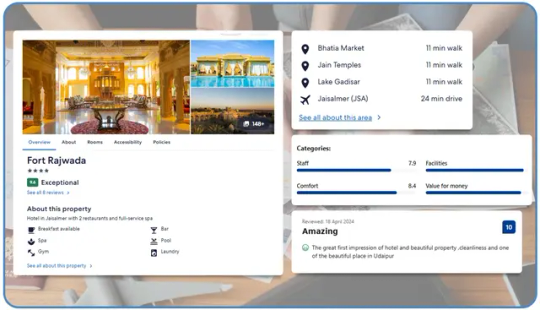
Leveraging Web Scraping For Market Trend Analysis In Travel allows businesses to systematically gather vast amounts of data over time, unveiling critical patterns and industry shifts.
By extracting and analyzing real-time travel-related data, companies can gain valuable insights, including:
Tracking price fluctuations across booking windows to optimize pricing strategies and maximize revenue.
Monitoring seasonal demand variations to align marketing efforts with peak travel periods.
Identifying emerging destinations to stay ahead of shifting traveler preferences.
Analyzing competitor promotional strategies to refine offers and enhance competitive positioning.
Assessing the impact of external events on travel demand to make informed, data-driven decisions.
By harnessing these insights, businesses can proactively adapt to market changes, ensuring they remain competitive and responsive rather than reactive.
How Web Data Crawler Can Help You?

We specialize in delivering comprehensive data extraction solutions tailored for the travel industry. With a blend of technical expertise and industry knowledge, our team ensures high-quality, reliable data that empowers businesses to make informed decisions and drive growth.
Our Services Include:
Customized scraping solutions designed to meet your unique business requirements
Regular data delivery via API or structured reports for seamless access
Comprehensive data cleaning and normalization to ensure accuracy and consistency
Integration support to align with your existing systems effortlessly
Ongoing maintenance to guarantee uninterrupted data flow
Unlike standard Web Scraping API providers, we recognize the complexities of travel data and the challenges of extracting information from platforms like Booking.com and Expedia.com.
Our solutions are crafted to deliver:
Superior data quality through advanced validation techniques
Exceptional reliability with built-in redundancy for uninterrupted service
Customizable data formats tailored to your specific business needs
Scalable infrastructure that evolves as your requirements grow
Expert support from professionals with deep technical and industry expertise
With us, you gain a trusted partner dedicated to providing actionable insights and scalable solutions that fuel business success.
Conclusion
In today’s competitive travel industry, data is the key to success. An influential Travel Scraping API Service converts raw information into actionable insights, helping businesses make informed decisions across operations.
From refining pricing strategies to spotting emerging market opportunities, data from platforms like Booking.com and Expedia.com fuels sustainable growth and a competitive edge.
Unlock the potential of travel data with us. Our experts will craft a customized solution tailored to your data needs while ensuring compliance with industry standards. Don’t let valuable insights go untapped.
Contact Web Data Crawler today to transform data into your most powerful asset and drive success in the travel industry.
Originally published at https://www.webdatacrawler.com.
#APIScrapingServices#BookingComAPIScraping#ExpediaComDataScraping#TravelIndustryDataScraping#HotelPriceDataScraping#FlightDataExtraction#VacationRentalDataScraping#WebScrapingServices#TravelDataScrapingServices#DynamicPricingDataExtraction#BestWebScrapingToolsForTravelWebsites#HowToScrapeBookingComAndExpediaData#ExtractingHotelAndFlightPricesFromAPIs#WebScrapingForMarketTrendAnalysisInTravel#TravelIndustryDataScrapingBestPractices#CustomAPIScrapingSolutionsForTravelWebsites#WebDataCrawler#WebScrapingAPI
0 notes
Text
Revolutionizing Transit: The Power of Transportation Scheduling Software

In today’s fast-paced world, efficient and reliable transportation systems are essential for ensuring smooth mobility across cities and regions. Transportation scheduling software has emerged as a game-changer, helping transit agencies, non-emergency medical transportation (NEMT) providers, and on-demand ride services optimize their operations. By leveraging advanced technologies, these solutions enhance scheduling, route planning, and fleet management, benefiting both passengers and service providers.
The Role of Paratransit Software in Accessible Transportation
Paratransit services play a crucial role in providing mobility solutions for individuals with disabilities and senior citizens who may not be able to use conventional public transit. Paratransit software is specifically designed to handle the unique requirements of these services, ensuring that passengers receive timely and efficient transportation.
Modern paratransit software integrates features like automated scheduling, real-time tracking, and ride coordination to improve operational efficiency. By reducing manual intervention, these systems help transit agencies minimize scheduling errors and provide seamless experiences for riders. Many transit agencies and municipalities now rely on paratransit software to enhance accessibility and inclusivity within their transportation networks.
Microtransit Software: The Future of Flexible Transit
As urban mobility evolves, demand-responsive solutions such as microtransit are gaining popularity. Microtransit software enables agencies to offer dynamic, on-demand services that bridge the gap between traditional public transportation and private ride-sharing. By utilizing real-time data and AI-powered route optimization, microtransit software allows vehicles to adjust their routes based on passenger demand, reducing wait times and improving service efficiency.
Microtransit solutions are particularly useful in areas where fixed-route transit services are not viable due to low ridership. Cities and transit operators implementing microtransit software can reduce operational costs while ensuring passengers have convenient and accessible mobility options.
Optimizing Operations with Paratransit Scheduling Software
One of the most critical components of transportation management is scheduling. Paratransit scheduling software streamlines the entire scheduling process, from booking to dispatching, by automating route assignments and vehicle allocation. By integrating GPS tracking and real-time traffic data, this software helps reduce delays and improve fleet utilization.
Advanced scheduling solutions also support multi-modal coordination, allowing transit agencies to combine paratransit and fixed-route services efficiently. This enhances service reliability, improves customer satisfaction, and optimizes resource allocation.
Public Transportation Software: Driving Efficiency in Mass Transit
Public transit agencies require robust solutions to manage large-scale transportation networks efficiently. Public transportation software helps transit operators handle scheduling, fare collection, passenger information systems, and fleet management. With the integration of real-time analytics, predictive maintenance, and automated dispatching, public transportation software ensures seamless service delivery.
These systems enable transit authorities to analyze ridership patterns and make data-driven decisions to improve service frequency, reduce congestion, and enhance overall operational efficiency. By adopting public transportation software, agencies can provide safer, more reliable, and cost-effective transit solutions.
NEMT Fleet Providers: Enhancing Healthcare Mobility
Non-emergency medical transportation (NEMT) plays a vital role in ensuring patients can access healthcare services. NEMT fleet providers depend on specialized transportation scheduling software to coordinate rides efficiently while ensuring compliance with healthcare regulations.
NEMT scheduling solutions integrate with electronic health records (EHR) and billing systems, streamlining the process for hospitals, clinics, and insurance companies. By optimizing routing and reducing wait times, NEMT fleet providers can offer timely and dependable transportation for patients who require medical appointments, rehabilitation services, or routine check-ups.
Conclusion: The Future of Smart Mobility
The integration of transportation scheduling software in transit systems is revolutionizing the way mobility services are managed. From paratransit and microtransit to public transportation and NEMT operations, these advanced solutions enhance efficiency, reduce costs, and improve service reliability.
As urbanization and mobility demands continue to grow, adopting cutting-edge transportation software solutions will be crucial for ensuring accessible, efficient, and sustainable transit systems. With innovations in AI, IoT, and cloud computing, the future of smart transportation is set to be more connected, data-driven, and passenger-centric than ever before.
0 notes
Text
0 notes
Text
0 notes